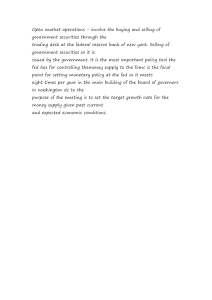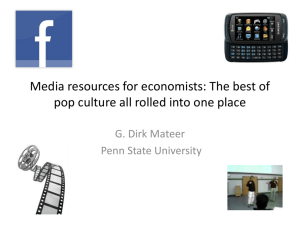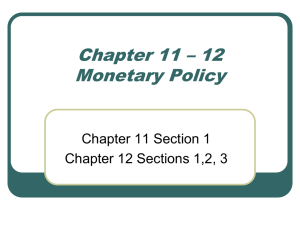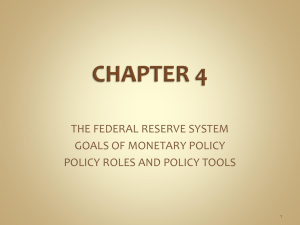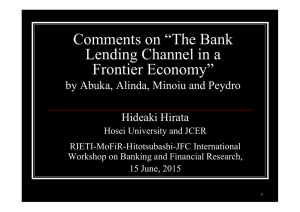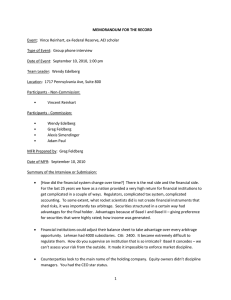The Boston Globe Insider Ratings Have Eroded Trust in Wall Street
advertisement
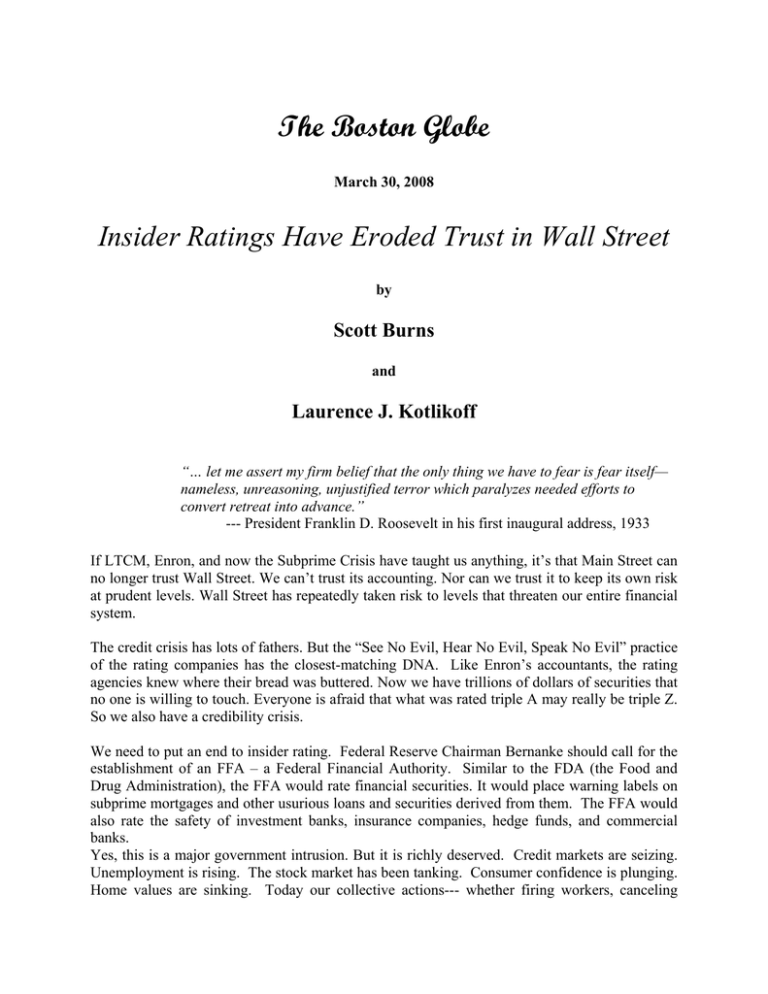
The Boston Globe March 30, 2008 Insider Ratings Have Eroded Trust in Wall Street by Scott Burns and Laurence J. Kotlikoff “… let me assert my firm belief that the only thing we have to fear is fear itself— nameless, unreasoning, unjustified terror which paralyzes needed efforts to convert retreat into advance.” --- President Franklin D. Roosevelt in his first inaugural address, 1933 If LTCM, Enron, and now the Subprime Crisis have taught us anything, it’s that Main Street can no longer trust Wall Street. We can’t trust its accounting. Nor can we trust it to keep its own risk at prudent levels. Wall Street has repeatedly taken risk to levels that threaten our entire financial system. The credit crisis has lots of fathers. But the “See No Evil, Hear No Evil, Speak No Evil” practice of the rating companies has the closest-matching DNA. Like Enron’s accountants, the rating agencies knew where their bread was buttered. Now we have trillions of dollars of securities that no one is willing to touch. Everyone is afraid that what was rated triple A may really be triple Z. So we also have a credibility crisis. We need to put an end to insider rating. Federal Reserve Chairman Bernanke should call for the establishment of an FFA – a Federal Financial Authority. Similar to the FDA (the Food and Drug Administration), the FFA would rate financial securities. It would place warning labels on subprime mortgages and other usurious loans and securities derived from them. The FFA would also rate the safety of investment banks, insurance companies, hedge funds, and commercial banks. Yes, this is a major government intrusion. But it is richly deserved. Credit markets are seizing. Unemployment is rising. The stock market has been tanking. Consumer confidence is plunging. Home values are sinking. Today our collective actions--- whether firing workers, canceling orders, or dumping assets--- are ensuring a weak economy, largely because Wall Street has destroyed our trust. The Federal Reserve is responding by preparing to bail out the entire financial sector. The gamble here is gigantic. Wall Street risk-taking has put all of us on a knife edge between asset collapse and rampant inflation. Are we over-dramatizing? We don’t think so. With the Bears Stern bailout, Federal Reserve Chairman Ben Bernanke has pledged $330 billion to shore up banks, investment companies, hedge funds, and quasi-governmental lenders. This is a pittance measured against the $10 trillion in mortgages or mortgage-backed securities held by these institutions. If home prices really start falling (they are still 63 percent higher in real terms than in 2000) and delinquencies soar, the Fed will have a terrible choice: Let these institutions fail, or print trillions of dollars. The first course could leave the financial system and economy in free fall. The second could spell hyperinflation. Yes, the $330 billion running total for the bailout is minor compared to the trillions in mortgages and securities. But it is massive compared to the $683 billion basic supply of money (the monetary base) set by the Fed. That’s a problem because prices are ultimately proportional to the supply of money. Double the money supply and, over time, prices will double. The monetary base, however, is only one of two determinants of the M1 money supply – the amount of currency plus checking account balances -- that ultimately governs our liquidity and the level of prices. The other determinant is bank lending. If banks stop lending, there will be less money deposited in checking accounts. That means less money to be relent, deposited, etc. via what’s called the money multiplier. Without this lending, M1 can contract and prices fall--- even though the Fed does its part to raise the money supply. This is what happened in the Thirties. The Fed expanded the Monetary Base by one fifth, but the banks stopped lending. So the money multiplier fell. On balance M1 contracted and prices started falling. The same thing happened in Japan in the 1990s. The difference today is that we’re not talking about a 20 percent increase over several years in the monetary base. Today it’s almost a 50 percent immediate rise. If the Fed ends up raising the Monetary Base by trillions, rather than $330 billion, M1 and prices will blossom. Yes, the Fed is coming up with part of the $330 billion by issuing Treasury bonds. But our government is already hocked (figuratively and literally) to China. Uncle Sam doesn’t have the tax revenue, either now or in the future, to pay back federal debt, cover the $1 trillion-and-rising bill for Iraq, and meet soaring Medicare, Medicaid, and Social Security costs. Issuing more Treasury’s just means printing more money in the future to cover their principal and interest payments. So we’ve got a real problem. The first step toward a long-term solution is to establish the Federal Financial Authority and restore the credibility of our rating system. Laurence J. Kotlikoff is a professor of economics at Boston University, a fellow of the American Academy of Arts and Sciences, and a research associate at the National Bureau of Economic Research. Scott Burns is a nationally syndicated personal finance columnist.
